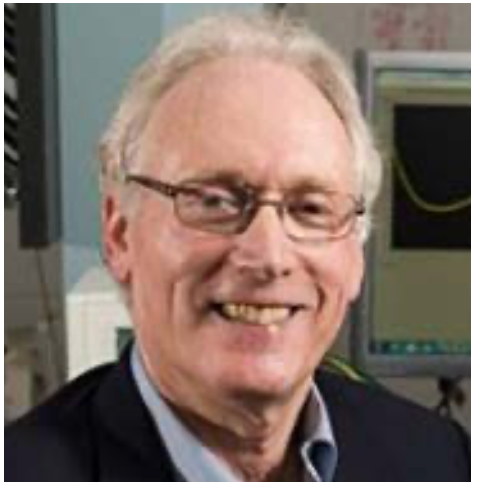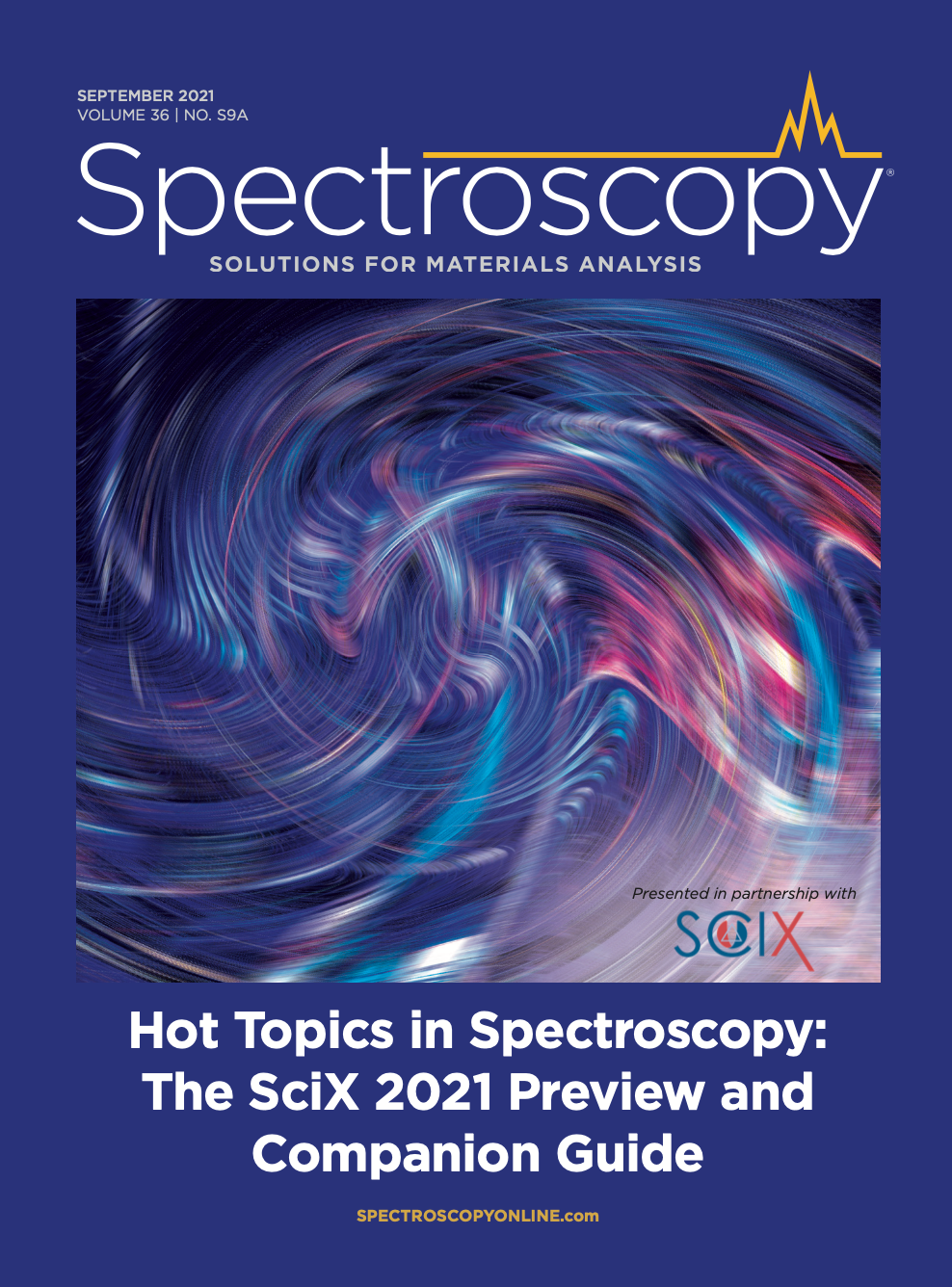Developing Electrochemical and Optical Sensors to Measure Analytes in Physiological Samples
Throughout his career, Mark Meyerhoff, the Philip J. Elving Professor of Chemistry at the University of Michigan, has been exploring chemical sensors for biomedical applications. Recent work has involved the development of novel nitric oxide (NO)–releasing implantable sensors or monitoring important analytes continuously in vivo. For his work Meyerhoff has been awarded the 2021 ANACHEM award, which is presented annually to an outstanding analytical chemist based on activities in teaching, research, administration or other activity which has advanced the art and science of the field. Meyerhoff spoke to us about this work, his career, and what being presented this award at this fall’s SciX event means to him.
Would you comment on the meaning of being this year’s recipient of the ANACHEM Award, and some descriptive words about the impact of past recipients?
It is a great honor to be selected as this year’s recipient of the ANACHEM Award. Two very famous University of Michigan (U of M) Analytical Chemistry professors, Hobart H. Willard and Philip J. Elving, who both had an enormous impact in the field of analytical chemistry, won this award in 1953 and 1957, respectively. Indeed, my current collegiate professorship is titled the Philip J. Elving Professor of Chemistry. I overlapped with Elving for nearly five years, and he gave me great advice to help me succeed in academics and in running my research group. Two other outstanding U of M analytical professors, Mike Morris and Richard Sacks, were also winners of this award (1999 and 2006, respectively), and they also were great role models for me. To win an award won by these and many other stars in the field of analytical chemistry is very special.
Your career has demonstrated a lifelong interest in exploring using chemical sensors for biomedical applications. Why did you select electrochemical and optical sensor methodologies to explore biological systems?
As an undergraduate chemistry major (at Herbert Lehman College, CUNY system), I originally thought I would pursue a career in nuclear magnetic resonance (NMR) or mass spectrometry (MS). I was fortunate to have hands-on experience with these “big” instruments in the early 1970s in a qualitative organic analysis course. We were given four unknown organic compounds and had to identify what those molecules were, using infrared (IR), MS, and NMR. However, when taking an instrumental analysis course, one of the experiments was to use a fluoride ion-selective membrane electrode to determine the fluoride concentration in New York City drinking water. It was such a relatively simple method, given the selectivity of the sensing chemistry (LaF3 crystal develops a different voltage in response to the activity of fluoride in the sample) that I immediately became very interested in pursuing my PhD in this area. I decided to go to SUNY-Buffalo to work with one of the leaders in the field of ion-selective electrodes (ISE) and biosensors at that time, Professor Garry A. Rechnitz.
Your research team has developed novel nitric oxide (NO) releasing implantable sensors or monitoring important analytes continuously in vivo. What has been your motivation to get involved in this challenging area?
In the mid-1990s, my laboratory started to work on developing sensors that can emit nitrogen oxide (NO) to prevent clotting on the surface of sensors implanted in blood vessels for continuous monitoring of oxygen, carbon dioxide, and glucose, among other blood analytes. This had been the “holy grail” in the field of sensors for some time. However, such devices would often fail and give erroneous results, because platelets in blood would become activated and stick to the surface of the sensors. Platelets are metabolically active, consuming O2 and producing CO2, so platelet adhesion on the sensors would cause false analytical results. I went to a lecture on the U of M campus by Michael Marletta, and learned that NO is produced by endothelial cells that line the walls of all blood vessels, and NO levels near the surface of these cells prevent platelet activation and clotting. So, I wrote an NIH RO1 grant to pursue the idea of using NO release compounds (diazeniumdiolates back then) on the surface of various sensors to greatly improve their in vivo analytical performance. That grant was funded and renewed multiple times. Most importantly, in every in vivo sensor experiment (in animals) we have conducted over the past 20 years, there has always been a very significant improvement in the accuracy of the analyte measurements with NO release sensors vs. control sensors (without NO release) implanted in the blood vessels of the same animals. This has been true no matter what chemistry is used to generate the increase in NO locally at the surface of the in vivo sensing devices.
At what age did you realize that analytical science would be your career choice?
Probably in my second year of college at age 18, when I had a quantitative analysis class. I really loved getting “unknown” samples and then doing some measurements (including titrations and spectrophotometry) to determine the concentration of a given species. Grading back then was based almost completely on accuracy, so that meant you had to be really careful. That was when I decided to pursue a career in analytical chemistry, but as described above, it was a year later when I took instrumental analysis, and we did a fluoride ion-selective experiment, that I found my passion for this given subfield (sensors) of analytical chemistry.
What were some of the most challenging problems you have encountered during your research career?
One of them was perhaps finding the right project that would motivate a given graduate student or post-doc to become truly passionate about their research. I typically would give a student or post-doc one or two side projects, often via collaboration with other labs on campus. Many times, it was one of these side projects, not the main one that I originally assigned, that evolved into the main part of a student’s thesis, or a post-doc’s primary publications.
What would you consider to be the most meaningful contributions of your work?
This is a difficult question, since there are so many research publications that I feel were very meaningful and important. However, I have to say that as I approach my retirement years, the thing that stands out most to me is the training of so many graduate PhD students (68) and post-docs (38 or so) who are now very successful in academics (big and small schools around the world), as well as in industrial and governmental jobs. Without a doubt, this is the most gratifying part of being a professor at a major research university.
Would you share with our readers your work ethic, philosophy, and how you plan your daily or weekly work schedule?
Well, I am not the kind of person who can do things at the last minute. When it comes to preparing new lectures for class, or a seminar at a conference or university, I generally start way in advance, so that I have plenty of time to recheck the content, find spelling errors, make sure the substance of the lecture flows well, and so forth. The same is true for proposals and publications. In the case of proposals, I generally try to start two months in advance and try to write at least one paragraph or more most days of the week. Before you know it, the proposal is mostly done, and I have plenty of time to spend editing, getting figures inserted, and take other steps to make the proposal nearly perfect. This approach has worked well for me over many years.
What words of wisdom do you have for any young people interested in a scientific research career?
“Don’t Major in Minor Things.” I read those words in a little booklet that was given to me as a gift titled “Life’s Little Instruction Book: 511 Suggestions, Observations, and Reminders on How to Live a Happy and Rewarding Life.” I would often say to students that majoring in chemistry is not a minor thing, and that there are more career paths available by majoring in chemistry and biochemistry than almost any other science. Indeed, chemistry majors can easily obtain an industrial job after their four years in undergraduate school. They also are quite attractive candidates for medical and dental schools. Of course, if they enjoy conducting research, they can go on to obtain MS and PhD degrees and actually be paid during their graduate school years, with no tuition costs (now the stipends are in excess of $30,000 per year, whereas, when I was a graduate student, it was about $3000 per year).
Mark Meyerhoff is currently Philip J. Elving Professor of Chemistry in the Department of Chemistry at the University of Michigan, Ann Arbor. His long-term research interests have been in the field of analytical chemistry, particularly the development of new ion-, gas-, and bio-selective electrochemical/optical sensors suitable for measurements of clinically and environmentally important analytes. An active consultant or is on the Scientific Advisory Boards for several biomedical companies, he is cofounder of NOTA Laboratories and NitriCap Medical, two companies that are focused on developing novel NO-releasing chemistries and devices for medical applications.●


Pittcon 2025: Keynote Coulter Lecture Highlights Work in Regenerative Engineering
March 3rd 2025Yesterday, at 5:00 pm in Ballroom East, the Wallace H. Coulter Lecture took place, and it was delivered by Cato T. Laurencin, MD, PhD, who is well-known as a scientist and entrepreneur with an extensive career in regenerative engineering. His lecture highlighted the work he and his team has done in this space.
Investigating ANFO Lattice Vibrations After Detonation with Raman and XRD
February 28th 2025Spectroscopy recently sat down with Dr. Geraldine Monjardez and two of her coauthors, Dr. Christopher Zall and Dr. Jared Estevanes, to discuss their most recent study, which examined the crystal structure of ammonium nitrate (AN) following exposure to explosive events.
Advancing Zebrafish Research: FT-IR Imaging Sheds Light on Tissue Preservation in Zebrafish
February 5th 2025Researchers at the University of Lublin and the Medical University of Lublin have demonstrated the first application of FT-IR imaging in zebrafish larvae, revealing that frozen samples better preserve tissue structure than chemical fixation.
Distinguishing Horsetails Using NIR and Predictive Modeling
February 3rd 2025Spectroscopy sat down with Knut Baumann of the University of Technology Braunschweig to discuss his latest research examining the classification of two closely related horsetail species, Equisetum arvense (field horsetail) and Equisetum palustre (marsh horsetail), using near-infrared spectroscopy (NIR).